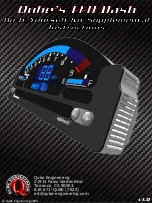
Chevrolet Spark Owner Manual (GMK-Localizing-Israel-15672694) - 2022 -
CRC - 3/17/21
Driving and Operating
125
Parking Brake
{
Warning
Always apply parking brake firmly
without operating the release button, and
apply as firmly as possible on a downhill
or uphill slope.
To release the parking brake, pull the
lever up slightly, press the release button
and fully lower the lever.
To reduce the operating forces of the
parking brake, depress the foot brake at
the same time.
See
Brake and Clutch System Warning Light
Brake Assist
If the brake pedal is depressed quickly and
forcefully, maximum brake force is
automatically applied (full braking).
Maintain steady pressure on the brake pedal
for as long as full braking is required.
Maximum brake force is automatically
reduced when the brake pedal is released.
Hill Start Assist (HSA)
The system helps prevent unintended
movement when driving away on inclines.
When releasing the foot brake after
stopping on an incline, the brakes remain on
for a further two seconds.
The brakes release automatically as soon as
the vehicle begins to accelerate.
{
Warning
Do not rely on the HSA feature. HSA does
not replace the need to pay attention
and drive safely. You may not hear or
feel alerts or warnings provided by this
(Continued)
Warning (Continued)
system. Failure to use proper care when
driving may result in injury, death,
or vehicle damage.
Ride Control Systems
Traction Control System (TCS)
The Traction Control system (TC) is a
component of the Electronic Stability Control
system.
TC improves driving stability when
necessary, regardless of the tire of road
surface or tire grip, by preventing the drive
wheels from spinning.
As soon as the drive wheels starts to spin,
engine output is reduced and the wheel
spinning the most is braked individually.
This considerably improves the driving
stability of the vehicle on slippery road
surfaces.
TC is operational as soon as the control
indicator
G
extinguishes.
When TC is active
G
flashes.
















































